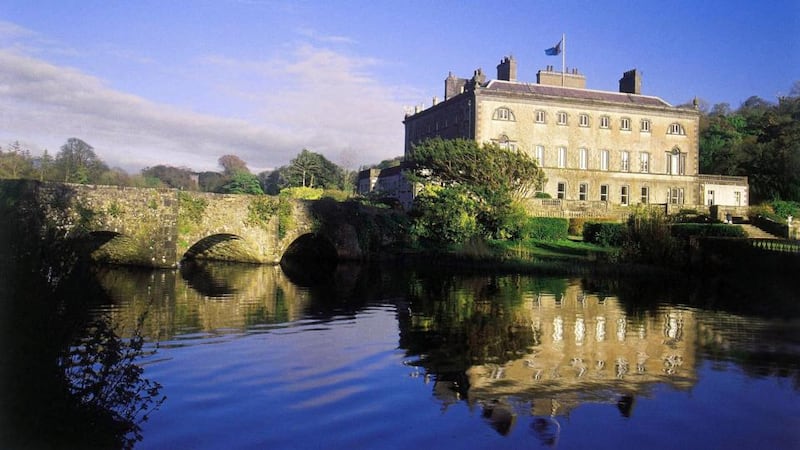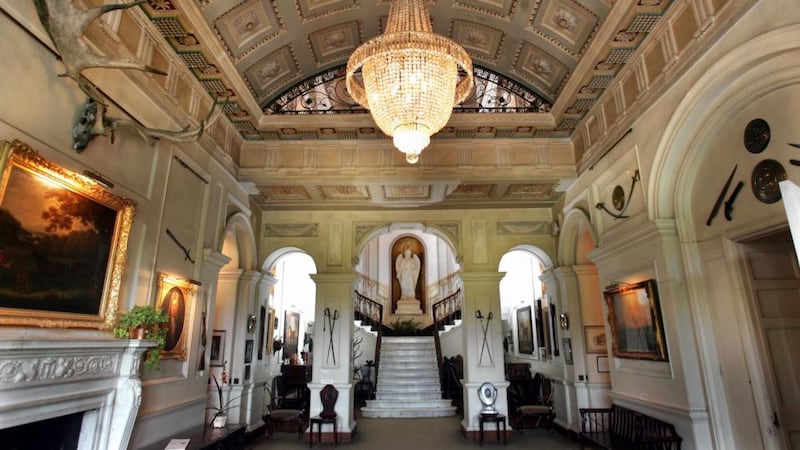Sheelyn Browne's ancestors, including the legendary Grace O'Malley, survived famines and rebellions at the family estate in Westport, which was once described by writer William Makepeace Thackeray as enjoying "the most beautiful view . . . in the world".
However, the estate faces new, more modern dangers. Nearly €10 million worth of debts incurred by her father, Jeremy – secured on the estate's 380 acres, but not on Westport House itself – are now in the hands of the National Asset Management Agency (Nama).
Included in Nama's Project Arrow, the debt is currently up for sale, with two funds in contention – most notably the US-based company, Cerberus, which has been embroiled in controversy in Northern Ireland after it bought other Nama debts.


Browne does not want to talk about the debts, referring only to the “last three years being fairly horrendous”, particularly with the death of her father, who struggled for decades to make Westport House one of the country’s premier visitor attractions.
Economic downturn
In 2006, her father came to a crucial judgment.
“We reached this crossroads – another one, as there had been many – and my father felt there were three choices: to sell up, keep going the way we were, or invest further,” she says.
"This was just a year before the economic downturn, and he took a loan and created a masterplan, a 50-year strategy which was really requested by Mayo County Council. "
The plan included a sheltered housing scheme for elderly people, and renovation of coach houses and other buildings. Then, the recession struck and the estate’s fortunes went downhill.
Her father died last year at the age of 76. In August, the High Court issued letters of administration to accountant Con Casey and solicitor Dermot Furey, who are dealing with the late Lord Altamont's probate.
Documents, the probate note declared, had been shared with Revenue “wherein it is shown that the gross value of all of the estate of the said deceased within this jurisdiction” amounted to €12,089,067.00, but “the net value thereof amounts to €0.00”.
This week, an economic report commissioned by Mayo County Council shows that visitor numbers to Westport House have increased by 82 per cent in the past five years, contributing €1.7 million directly to the exchequer and local economy in 2014, but €50 million indirectly to the region.
“This really confirmed that we’ve been doing something right for the last 55 years since the house was opened to the public,” Browne says. “For the family, the report is an important milestone.
“I only wish my father had been alive to witness its publication, as both my parents dedicated their entire life to this estate. They didn’t have a jet-setting time with houses all over the world. Running a place like this and trying to make it pay meant there was no outside life.”
Her late father, Jeremy Altamont, 11th Marquess of Sligo, outlined the extent of that struggle in his book, A Life at Westport House: 50 Years A-Going, which was published last year.
“Being an arrogant and young man, I thought I would have the problems of Westport House and Estate sorted in about five years,” he wrote, recalling his mother’s summons home after he had spent two terms at the Royal Agricultural University in Cirencester in England.
At the time, the estate was all of 800 acres, and the focus was on agriculture and forestry, until his father Denis, 10th Marquess of Sligo, decided that crippling costs after large payment of inheritance taxes would force sale or commercialisation.
History
Denis, who was Sheelyn Browne’s grandfather, received two solid offers – one for £6,000 from a firm in Kilkenny that wanted to demolish it and one for £7,500 from a
Galway
solicitor.
As “neither seemed to make much sense” he opened the house to tourists in 1961 and recorded 5,000 visitors in that first year.
“My grandfather, who had been an artist in London before he inherited the estate, was more focused on the history and published it, while my father was more commercial,” says Browne, who is officially Lady Browne.
"I've no interest in the title, really, and nor did my father, but he also knew that people were more interested in seeing a house owned by a Lord Altamont than a house owned by a Mr Browne."
Jeremy Browne and his wife Jennifer threw all their energies into attracting footfall on a part of the coastline far away from large conurbations, opening a children's zoo, miniature railway, a caravan and camping site, an antique shop, bar, flume ride and what became a pirate adventure park and activity centre.
Visitor numbers reached 60,000 annually by the late 1970s and now stand at 162,000 a year. Her father's sense of fun, combined with his flair with the media – including RTÉ's Gay Byrne and the late Frank Hall – helped to put the house on the map, even as he and his wife lurched from one challenge to the next.
He threatened to demolish the house in 1976 when it seemed that a wealth tax that would have made the estate, then still losing money, liable for 1 per cent of its value.
"There was constant drama," Browne recalls, be it an all-day occupation by the IRA in 1981, when her father was in court applying for a bar licence, or the time he rescued Teddy Fossett from an aggressive chimpanzee by hitting the animal over the head with a hammer.
Recognising after his third daughter that he might not have a son, Jeremy Browne also “burst the bubble of primogeniture”, as former MEP Avril Doyle put it.
With his solicitor Michael Egan and the legal assistance of former president Mary Robinson, he initiated a private Bill in the Oireachtas which dissolved a 1963 settlement by which Westport House could only be inherited by an eldest male heir.
The council also compulsorily acquired 14 acres of what Browne describes as prime land for a sewerage treatment plant. “My father had offered two other sites.”
A 13-acre area was also sold to Westport United Football Club.
“We have a great relationship with Mayo County Council and the councillors know the value of 160,000 people coming through these doors,” she says. “The fact that we grew visitor numbers during a recession is something of an achievement.”
One recently opened exhibition and accompanying research shows the family was concerned about tenants during the Famine. Copies of letters written by one of her antecedents, Lady Hester Catherine Sligo, wife of the second marquess, Peter Howe Browne, who freed slaves while governor in Jamaica, bear this out.
On the morning of the economic report publication, with sun streaming through the doorway and woodsmoke curling up through the main hall, county manager Peter Hynes welcomed its findings as "very important at a seminal moment".
Close relationship
This week, it is understood that there have been informal discussions with Mayo County Council about the precarious situation, and the Government is also aware of it.
Sources close to the family point to a provision under section 4.1.1 of Nama guidelines permitting the sale of a real estate asset to be concluded without open marketing “where a government entity or State/semi-State body has approached Nama, or any of its subsidiaries, to purchase a real estate asset for legitimate reasons in the public interest”.
Minister of State for Tourism Michael Ring, who is TD for the town, would make no comment.
“We have a very close relationship with the town of Westport and from time to time we have donated land, including the new skatepark, the northern greenway cycle route and other pieces,” says Browne.
Built on the foundations of one of Grace O'Malley's castles, the house and grounds overlooking Clew Bay have survived Williamites, occupation by French troops with General Humbert, two fires, the Famine, rebellion and civil war.
The prospect of acquisition by a vulture fund may sound less dramatic, but is no less of a threat.
Despite the "uncertainty", Sheelyn Browne is adamant the house and estate will stay open for its Hallowe'en and Christmas bookings and, she hopes, beyond.
“You have to have a little bit of madness to run a place like this; it’s a family home, we have opened up all 33 rooms and people can stay as long as they want,” Browne says.
“It’s not perfect, it’s not corporate, and I think that’s what people like.”











